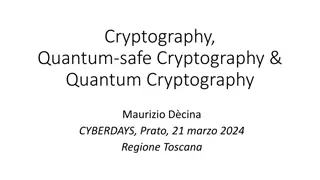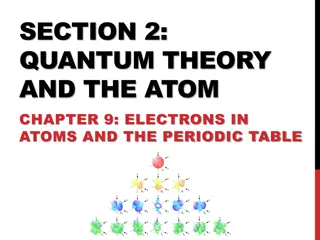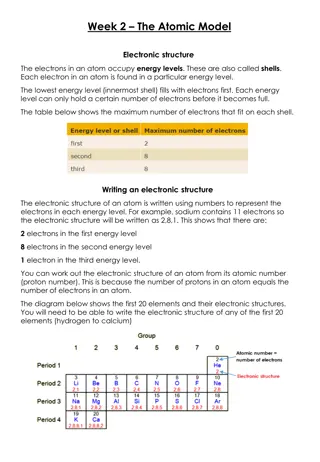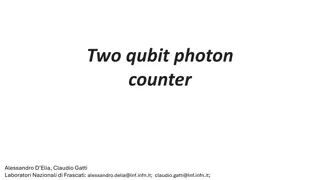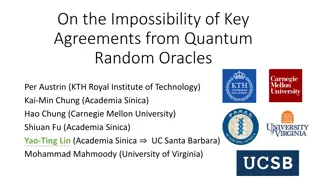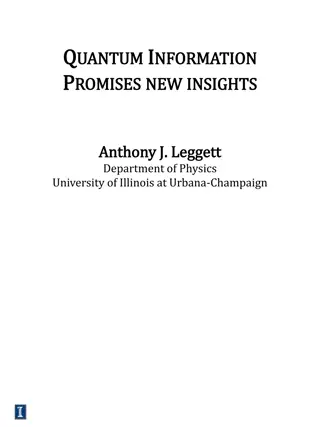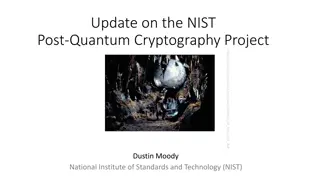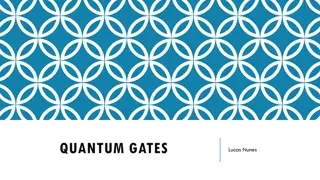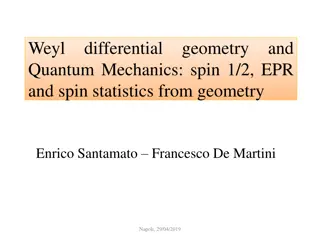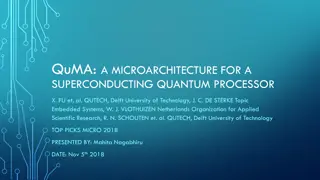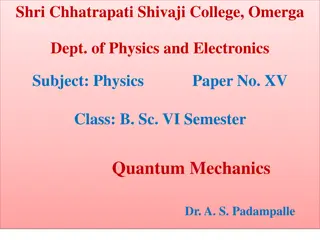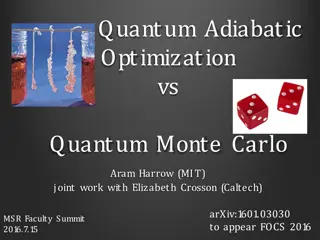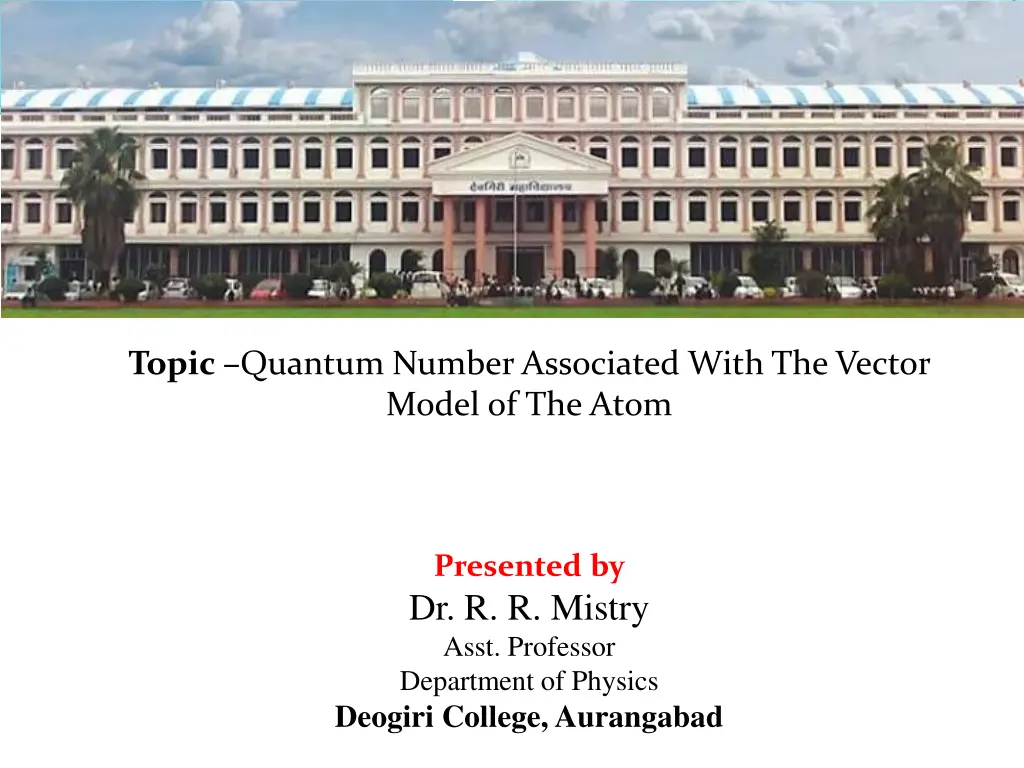
Quantum Number in the Vector Model of the Atom
Explore the quantum numbers associated with the vector model of the atom as presented by Dr. R. R. Mistry, including the total quantum number, orbital quantum number, and spin quantum number. Dive into the concept of magnetic orbital quantum number and its significance in understanding electron behavior in magnetic fields.
Download Presentation

Please find below an Image/Link to download the presentation.
The content on the website is provided AS IS for your information and personal use only. It may not be sold, licensed, or shared on other websites without obtaining consent from the author. If you encounter any issues during the download, it is possible that the publisher has removed the file from their server.
You are allowed to download the files provided on this website for personal or commercial use, subject to the condition that they are used lawfully. All files are the property of their respective owners.
The content on the website is provided AS IS for your information and personal use only. It may not be sold, licensed, or shared on other websites without obtaining consent from the author.
E N D
Presentation Transcript
Topic Quantum Number Associated With The Vector Model of The Atom Presented by Dr. R. R. Mistry Asst. Professor Department of Physics Deogiri College, Aurangabad
Quantum Number Associated With The Vector Model of TheAtom: (a) A total quantum number (n):- It can take only integral values 1,2,3,4 etc. It gives position of electrons. Using this we can calculate theenergy of electrons. (b) An orbital quantum number (l):- Which can take any integral value between 0 and (n-1) inclusively. Thus if n=4, l can havevalues 0,1,2,3.
This quantum number is similar to azimuthal quantum number n =k . the two are related by l=k-1. The orbital angular momentum of electron is given by , as it is quantized but by wave mechanics the orbital angular momentum has the value .. by convention an electron for which l=0 is called S electron if l=1, p electron; l=2, d electron; l=3, f electron etc.
(c)A magnitude of which is always . At first this half integral value contradicts the integral multiple rule of quantization moments, appeared to raise a serious difficulty against the spinning electron theory. But the use of half integers for s consistently leads to results which are in complete agreement with experimental facts. spin quantum number (S): The of angular
If the atom is place in a magnetic field so that some preferential axis in a space that field exerts a directive influence on both the orbital and spin motions which constitute elementary magnets, three more quantum numbers will be associated with theelectron. (e)A magneticorbital quantum number (ml): Which is refers to the numerical value of the projection of the orbital vector l on the field direction. ml is an integer and may have only any of the (2l+1) values from l to +l including zero.
The possible values of ml are (2l+1). If l=1, the permitted orientations are (2l+1)=(2+1)=3, for which ml has values +1, 0, -1. If l=2, the permitted orientations are 5, for which ml=+2, +1, 0, -1, -2. As shown in fig.
(f)A magneticspin quantum number (ms): Which is refers to the numerical value of the projection of the spin vector s on the field direction. By analogy with the orbital vector l, the vector s can have also only (2s+1) permitted orientations with respect to the field direction. The mscan have any of the (2s+1) values from s to +s, without including zero. Since s is always equal to and never zero. This means that ms can haveonly twovalues +1/2 and -1/2.
(g)A magnetic total angular momentum quantum number (mj): Which is refers to the numerical value of the projection of the total angular momentum vector j on the field direction. Since , mjmust haveonly half integervalues. The permitted orientations of j with respect to the field direction are (2j+1) and hence mjcan have only (2j+1) values from +j to j, zero excluded.

